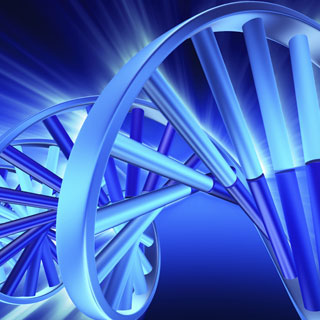
Researchers from UK Medical Research Council’s Laboratory of Molecular Biology have succeeded in mimicking the chemistry of life in synthetic versions of DNA and RNA molecules.
The work shows that DNA and its chemical cousin RNA are not unique in their ability to encode information and to pass it on through heredity.
The work, reported in Science, is promising for future “synthetic biology” and biotechnology efforts.
It also hints at the idea that if life exists elsewhere, it could be bound by evolution but not by similar chemistry.
In fact, one reason to mimic the functions of DNA and RNA – which helps cells to manufacture proteins – is to determine how they came about at the dawn of life on Earth; many scientists believe that RNA arose first but was preceded by a simpler molecule that performed the same function.
However, it has remained unclear if any other molecule can participate in the same unzipping and copying processes that give DNA and RNA their ability to pass on the information they carry in the sequences of their nucleobases – the five letters from which the genetic code is written.
The classic double-helix structure of DNA is like a twisted ladder, where the steps are made from paired nucleobases (RNA is typically a single helix).

Philipp Holliger and a team of colleagues created six different DNA- and RNA-like molecules – xeno-nucleic acids, or XNAs – by replacing not the nucleobases but the sugar groups that make up the sides of the ladder.
“There’s a lot of chemistry that seeks to build alternative nucleic acids, and people have been modifying the bases, the sugars and the backbone, but what we were focusing on was the type of nucleic acid or polymers that would retain the ability to communicate with the natural DNA,” Dr. Philipp Holliger explained in an interview for the Science podcast.
Because the nucleobases themselves were the same as those of DNA and RNA, the resulting molecules were able to join with their natural counterparts.
The effect is similar to work recently published in Nature Chemistry, showing that another sugar-substituted DNA analogue could be made to pair up with DNA itself.
But the crucial point in creating a full “synthetic genetics” is a set of nucleic acids like DNA and RNA that can not only carry genetic information, but would also allow it to be changed and passed on – evolution and heredity.
That requires a set of helper molecules called polymerases, which, once DNA or RNA “unzip” and expose their genetic information, help create new DNA molecules from those instructions.
Dr. Philipp Holliger and his colleagues have developed polymerases that efficiently transcribe the code of their synthetic DNA to natural DNA and then from that back to another synthetic DNA.
The process of evolution was encouraged in the lab; one of their DNA analogues was designed to cling to a particular protein or RNA target, those that failed to do so were washed away.
As successive copies of those that stuck were made, variations in the genetic code – and the resulting structure the molecules took on – led to ever more tightly attached XNAs.
“We’ve been able to show that both heredity – information storage and propagation – and evolution, which are really two hallmarks of life, can be reproduced and implemented in alternative polymers other than DNA and RNA,” Dr. Philipp Holliger explained.
“There is nothing <<Goldilocks>> about DNA and RNA – there is no overwhelming functional imperative for genetic systems or biology to be based on these two nucleic acids.”
In an accompanying article in Science, Gerald Joyce of the Scripps Research Institute wrote that “the work heralds the era of synthetic genetics, with implications for exobiology [life elsewhere in the Universe], biotechnology, and understanding of life itself”.
But the work does not yet represent a full synthetic genetics platform, he pointed out. For that, a self-replicating system that does not require the DNA intermediary must be developed.
With that in hand, “construction of genetic systems based on alternative chemical platforms may ultimately lead to the synthesis of novel forms of life”.